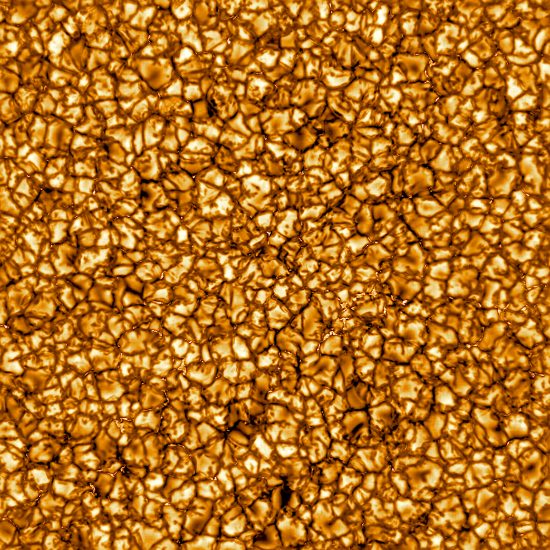
January 31, 2020
Scientists do not understand how the Sun works. For example, how does a coherent magnetic field exist when observations reveal chaos at small scales?
Heliophysicists believe that there is a dynamo inside the Sun that is powered by two forces: the “stretching and winding” of magnetic fields due to the Sun’s differential rotation, caused by differences in latitude, and the “twisting” of those fields because of rotational effects. As previously written, the former is called “the omega effect” and the latter is called “the alpha effect”.
According to a recent press release, the Inouye Solar Telescope created the most detailed images of the Sun ever taken. In the image at the top of the page, solar granulation can be seen covering the Sun’s photosphere. A principle of Electric Star theory, and its subset, the Electronic Sun, relates to that pattern of light and dark areas. It is where dense anode tufting is seen.
Close to the surface of an energizing anode, there is a brighter glow than what is produced by electrically excited gas. That brighter glow corresponds to the Sun’s photosphere, which can be thought of as the anode surface. When electric charge density exceeds the containment ability of the anode surface, a secondary plasma forms. That is the aforementioned anode tufting. The characteristic pattern of granulation on the Sun forms because tufts are packed together so tightly.
The electric model sees sunspots, solar flares, coronal heating, and especially the Sun’s magnetic field, as fluctuations in the amount of charge flowing into it. That electric current arrives in the form of plasma filaments that are gigantic in scale. They are extremely diffuse, but are so large that they carry tremendous amounts of electricity. Those Birkeland current filaments supply more or less power to the electric circuit powering the Sun.
Stars shine because electricity flows through each galaxy. As has been written in these pages many times, stars can be thought of as giant spheres of lightning. It is this simple hypothesis that best matches observational evidence. Electricity flowing through the solar plasma creates the Sun’s highly dynamic magnetic field, so no convective regions, transition zones, or alpha and omega effects are required.
Stephen Smith
The Thunderbolts Picture of the Day is generously supported by the Mainwaring Archive Foundation.












